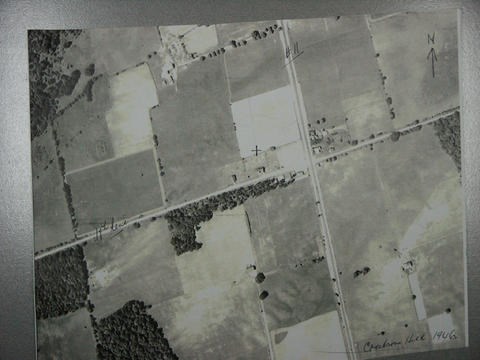Postcard Memories is a series of historic views, stories, and photos of Bradford and the area, a trip down memory lane on a Saturday morning.
Coulson's Hill, located at 11th Line and Penetag Road (now Yonge Street) was a hamlet with two churches, a hotel, an Orange Lodge hall, a blacksmith shop, a shoemaker's shop, and a small community of houses.
The two churches stood side by side on north side of 11th Line, just west of Penetang Road.
The Anglican church was founded in 1854. The Presbyterians built their first church in 1857. For more than a century, the Sunday services and church activities brought the community together.
The Presbyterian church closed in 1966. The Anglican church celebrated its 150th anniversary in 2004.
Coulson's Hill was named after the Coulson family who settled in the area in 1822. They donated land from their farm for the two church properties and associated cemeteries.
The Hill part of the name comes from the steep drumlin hilltop where the hamlet is located.
John Coulson contributed significantly to the materials used to build the Anglican church. The contributions ensured him a seat beside the minister at the front of the church. It has been told on occasions he would fall asleep which troubled some members of the congregation. After they complained to the minister, the minister replied that when they had done as much work as Coulson had, he would wake him.
The Coulson hotel was located on the east side of the highway. The blacksmith's shop was south of the original alignment of the 11th Line, east of Penetang Road. A pump maker had shop north of the crossroads.
All three of the landmarks disappeared after the highway was regarded in the 1960s.
The Coulson's Hill school was located on the west side of Penetang Road, a half a kilometre north of the four corners, and served the families in the hamlet before the schools were consolidated in 1960. The school was eventually demolished with no trace it was ever there.
The Orange Hall was located on Rober Wood's farm across the road from the two churches. The two founders of the lodge were Robert Wood and Joseph Fennell. Wood provided the land to build on, and Fennell provided the lumber to build the hall. The lodge was supported by many Coulson's families including the Wood, Fennell, Evans, Kneeshaw, Glover, and Andrews families.
The hall was built in 1856 and continued to provide a meeting place for Orange Lodge locals until 1960 when it was torn down to provide for the road allowance for the redesigned Coulson's Hill intersection.
On June 21, 1911, the women of the community met at the Presbyterian church and formed the Coulson's Hill Women's Institute. During the First World War they sent a gramaphone to the a hospital in England to help comfort the wounded soldiers. They also sent 74 pairs of hand knitted socks and 24 pillows. During the Second World War they sent music boxes, socks, and hospital gowns overseas.
Coulson's Hill remains today in name.
-from the Governor Simcoe Slept Here book from the Bradford West Gwillimbury Local History Association



